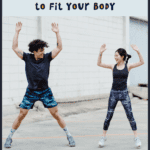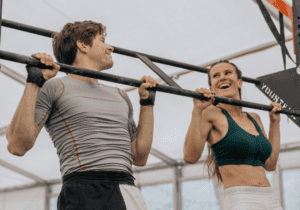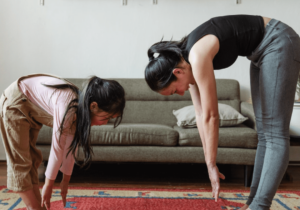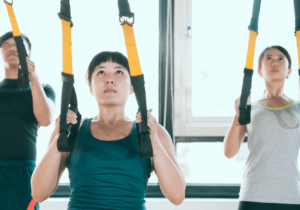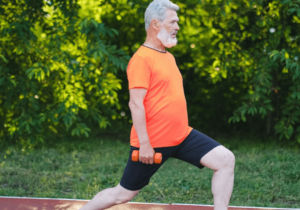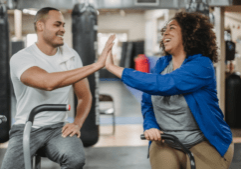3 More Ways to Modify Exercises to Fit Your Body
Fitness is for Everyone: Accessible Fitness Part 4
Most of these are small tweaks that can make the difference between a movement feeling great or not. If you feel overwhelmed with all the ways to adjust a movement, try them one at a time! Make one small adjustment and see how it feels, then try another. Many times, a combination of the variations in these four articles is what will end up working for you.
Modify Exercises with Elevation
Elevating a body part can make an exercise feel comfortable and more accessible to you. Try different heights of elevation to figure out what works best! Tools you can use to help elevate different parts of your body: wall, countertop, stairs, chair, stool, or bench, yoga blocks, foam roller, and pillows.
Your Hips
Works best with: movements that sit on the ground or have knees at an angle, such as 90/90s, child’s pose, and lunges.
How: Using something (pillow, yoga block, or chair) to raise your hips is most helpful for movements that happen in a sitting position on the ground or where you feel you need more support, such as in a lunge position.
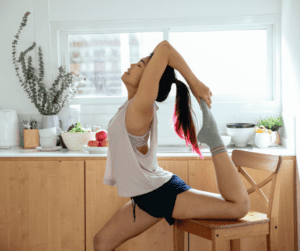
Your Hands
Works best with: any movement where you put weight on your hands, such as push ups, planks, mountain climbers, burpees, and supported rows.
How: When doing the movement, place your hands on a surface higher than the floor. The higher the incline, the less challenging it should feel. To progress the movement, choose a lower incline over time.
Your Back or Butt
Works best with: core exercises or other movements where you’re lying on the ground, such as dead bugs, Russian twists, and sit ups.
How: Support your upper back if you struggle to keep a flat back on the ground, or sit in a chair to give more leverage for core exercises if getting down to the ground is challenging for you.
Your Feet
Elevate your heels in a squat to get more range of motion.
Many find that elevating their feet (putting them on a short stool) during glute bridges makes them more comfortable. You can also use elevated feet to increase the challenge, such as in rear foot elevated split squats or deadlifts.
The starting point of a weight
Works best with: any movement that starts with the weight on the ground, such as deadlifts and kettlebell swings.
How: When doing a movement with the weight starting on the ground, start with the weight higher up, such as sitting on a bench, block, or stool.
Break up a multi-part exercise into separate pieces
If an exercise is full body and/or involves moving quickly, you can break it up into separate parts and slow it down to alter it. Either do the entire movement slowly or move one limb at a time. Some examples of common full body movements are below, but this can apply to any movement where multiple parts of the body are moving at once.
Burpee
Get from the ground to standing at a comfortable pace, jumping is optional. You can use a chair to support yourself if you don’t want to go down to the ground and step your feet out instead of together. Find a pace that works best for you!
Jumping Jacks
Instead of moving both hand and foot together, move one at a time. You can also bend your arms and legs (see more below).
Dead Bug or Bird Dog
Without the jump, raise your arms while stepping to one side, then switch.
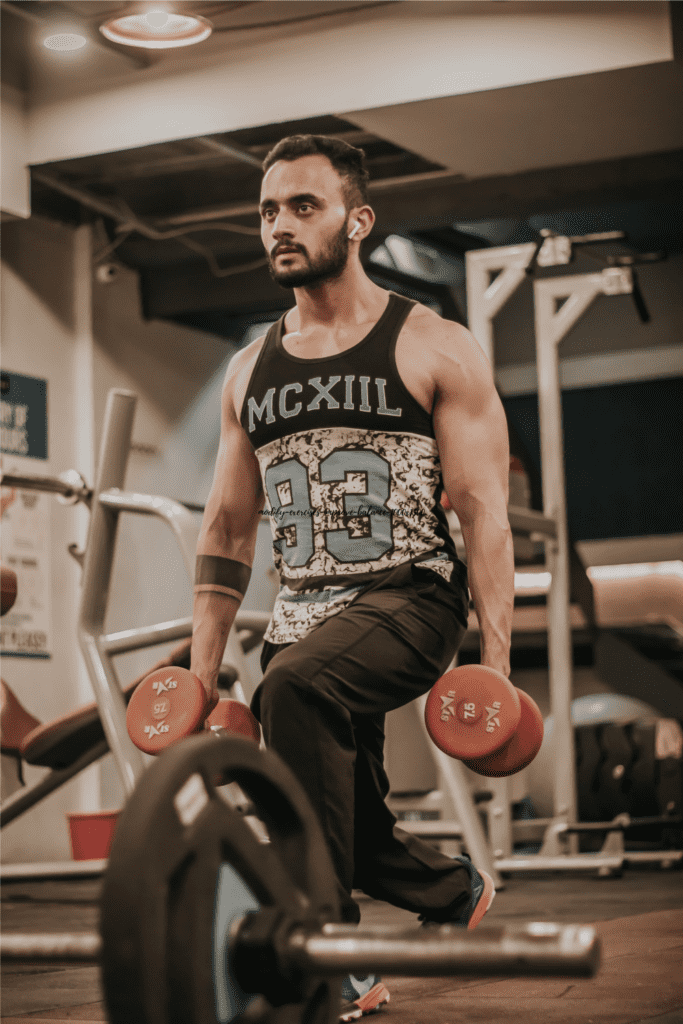
Change the body position
There are a lot of different ways to do this, but you can modify exercises by changing your body position to make a movement more or less challenging. You can adjust a movement by moving to a more stable or less stable option.
Generally, the less stable the option, the lighter weight you use, and a more stable position will allow you to use a heavier weight. This one definitely depends on the type of movement you’re doing- try different body positions to find the one that feels best!
Supine/Prone
Laying on the ground on your stomach or back is generally a stable posture, but doesn’t work for all movements.
Quadruped
Getting on all fours can be a stable position to work on core strengthening.
Tall Kneeling
Kneeling on both knees can be more challenging than standing for some exercises.
Half Kneeling
Kneeling with one foot and one knee on the ground tends to be a less stable position and can make a movement more difficult.
Standing
Standing can be a stable posture for many movements, but it can make a movement more challenging if you’re picking the weight up off the floor (you have to move it a lot farther!). In that case, a tall kneeling position might feel less challenging.
Staggered Stance
Putting one foot slightly behind the other gives you a less stable standing position.
Single Leg
Generally the most unstable body position for most movements- it involves a lot of balance and can challenge your stabilizing muscles in addition to other muscles being strengthened.
Modify exercises by shortening the lever
Generally, the shorter the object moving, the easier it is to move. When we apply this idea to our bodies, having our arms and legs fully outstretched will be the most challenging variation of a movement, and bending them will be less challenging. Here are a few examples where this can be applied, but try it with other movements too!
Dead Bug
Instead of having your arms and legs being completely outstretched, bend at the knees and elbows before you lower.
Lateral Raise (+ many arm movements)
Instead of raising weights with arms fully extended, try different degrees of bend in the elbows to see what feels best.
Leg Raises and V Ups
Instead of bringing feet to hands or feet to a bar, think knees to chest or to elbows.
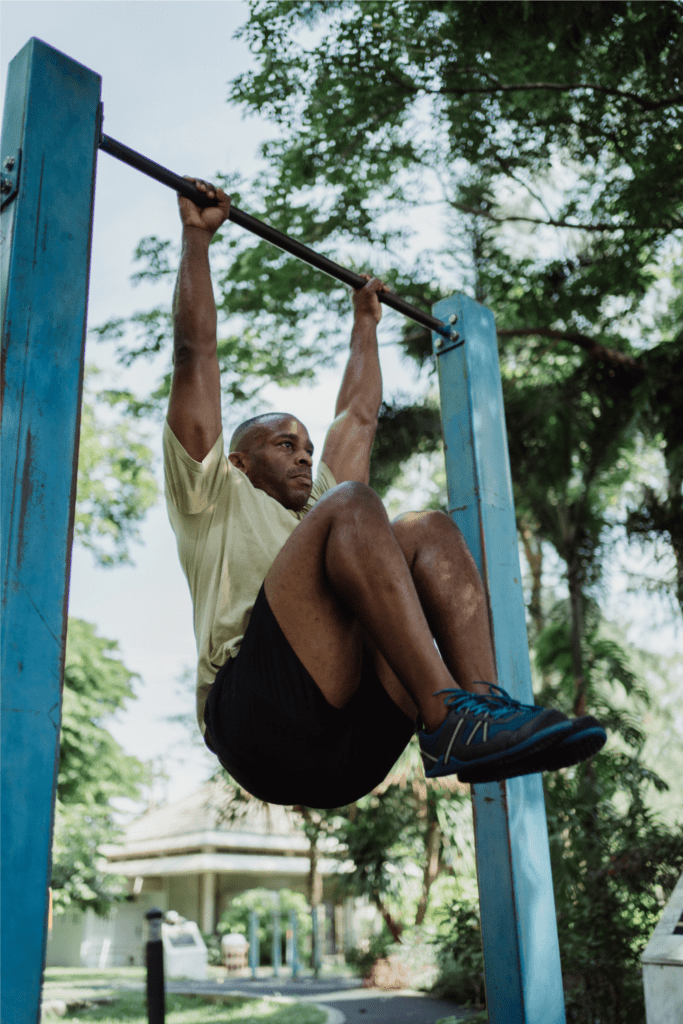
By adjusting exercises to fit your individual needs, you can
- stay motivated and prevent boredom,
- break through plateaus while avoiding injuries, and
- achieve your fitness goals in a safe and enjoyable way, regardless of your age, fitness level, or physical limitations.
So, don't be afraid to experiment, adapt, and innovate!
If you have questions about any of these variations to modify exercises or how to apply them to a specific movement, ask in the comments below! Thanks so much for reading this series!
Sarah Siertle, a strength and movement coach, specializes in introducing people to strength training and works to make the fitness world a more inclusive place. She has been a movement instructor since 2012 and also teaches swing dance around the US. Find other articles written by Sarah on her coach profile. Let Sarah help you get STRONG so you can take advantage of life’s adventures!

